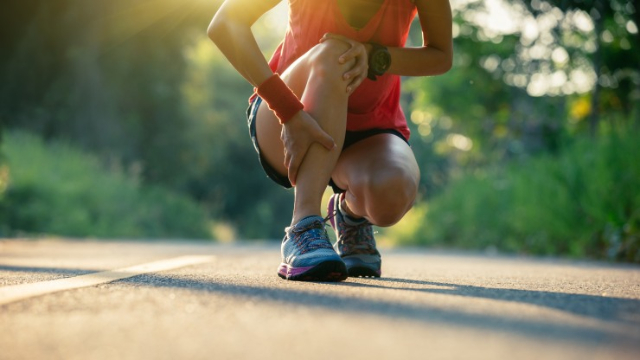After a new year’s resolution to get in shape, how would it feel to get injured on the first day of training? When you get an injury and you have to sit on the bench to watch games, that kills you on the inside.
One of the building blocks of a healthy lifestyle is exercise and physical activity, therefore sports injury is a major hindrance. Yao Ming (2009), a retired professional basketball player quotes, “Sports teach you how to be quick. Injuries teach you how to slow down”.
Prevention of injuries in exercise and sports has been emphasized severally in various publications and fields. However, much of the pointers emphasized on to help reduce the risk of sports injuries are not adhered to.
Some athletes and individuals kick themselves hard after realizing that some injuries could have been avoided easily if only, they adhered to simple measures such as wearing a protective clothing or seeking right medical treatments for their injuries. This would have saved them from the traumatic experience and fear associated with sports injury.
Former Black Stars skipper Charles Kwablan (CK) Akunnor (2019) revealed in an interview that persistent injuries forced him to hang up his boots after only a decade as a professional footballer.
What then could be done? (Preventive measures)
Develop an exercise program
We hit the gym using all equipment available in the name of ‘exercising’ without a plan in mind. Athletes or individuals must seek expert advice from personnel such as physiotherapists in the prescription of exercises appropriate for them, their fitness level and sporting events. Whether you aim at exercising for a match or general fitness, your physiotherapist will help you plan and also prescribe injury, fitness or age-appropriate exercises targeted to you at that point in time. Your physiotherapist will help you develop a fitness plan that includes cardiovascular exercise, strength training, body composition, and flexibility.
Warm-ups and cool downs
Failure to perform a proper warm-up can put you at risk of injury as the muscles and joints are not prepared for exercise. A warm-up is necessary to increase body temperature and circulation of blood to the muscles. A 15-20-minute warm-up should include a combination of stretching and cardiovascular (E.g. aerobic) exercises to prepare the body for exercise, increase performance levels and help to prevent injuries. A 15-20-minute cool down after your workout allows for a gradual recovery of pre-exercise heart rate and blood pressure. This also includes stretches, brisk walking and other light exercises which can be prescribed by your physiotherapist per your activities.
Strengthening Exercises
Everyone from well-trained athletes to weakened warriors can suffer a sports injury. When muscles are not used regularly, wasting in muscles can occur. This means the muscle fibres have become weakened. Weakness in the muscles, ligaments and tendons following vigorous exercise is often caused by inadequate fitness and engaging in an activity you’re not properly conditioned for. The good news, however is that with regular exercise and training prescribed by your physiotherapist, the muscles will adapt and strengthen. These exercises when prescribed should be treated as your mandatory dose for the best results.
Stretching Exercises
Stretching exercises can improve the ability of muscles to contract and perform, reducing the risk for injury. Each stretch should start slowly until you reach a point of muscle tension. Stretching should not be painful. Aim to hold each stretch for up to 20 seconds. Always take your time during stretch training and go through the full range of movement with each repetition.
Use the proper technique
Using proper technique should be reinforced during the playing season. Play safe. Strict rules against headfirst sliding in baseball and softball, spearing in football, and checking in hockey should be enforced. Ben Collett of Manchester United is the youngest professional player to have retired at 18 years due to injury. Collett suffered a double leg fracture following a rough tackle by Gary Smith against Middlesbrough in 2003.
Wear the right gear
Players should wear appropriate, protective and properly fitting equipment such as pads (neck, shoulder, elbow, chest, knee, shin), helmets, mouthpieces, face guards, protective cups, and eyewear. Young athletes should not assume that protective gear will prevent all injuries while performing more dangerous or risky activities.
Take time off
Plan to have at least 1 day off per week and at least one month off per year from training for a particular sport to allow the body to recover. Rest periods during practice and games also reduce injuries and prevent heat illness.
Do not play through pain
If you do sustain a sports injury, make sure you participate in adequate rehabilitation before resuming strenuous activity. Don’t assume your pain is not serious and go back to play without seeking appropriate advice from the sports medical team.
Stay hydrated
Drink water to prevent dehydration, heat exhaustion and heat stroke. While drinking enough water may seem like a simple action, it impacts virtually every aspect of sports performance. Staying hydrated increases energy, improves movement, recovery and agility, thermoregulation, and aids in mental clarity and activity all of which improve physical performance and reduce the risk of injuries.
Injury prevention measures should be employed before, after and during training sessions, gym work outs as well as competitive and social games. Physiotherapists can educate you on the precautions to take to avoid injury, traumatic experiences associated with injuries and termination of sporting careers early in life. Gyms, hotels with sporting fields, recreational centers, sports clubs and teams as well as individuals who love to exercise at home should seek expert advice from personnel such as physiotherapists to help prevent the risk of sports injuries.
Source: Gabriella Acquaye || Physiotherapist, Holy Trinity Medical Centre ||
Email: [email protected]


Comments are closed.